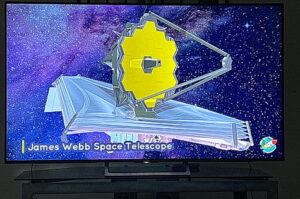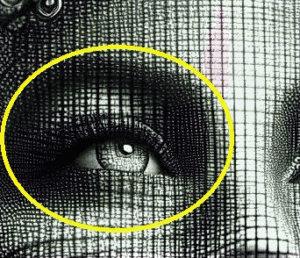
In 1994, a man walked into a Manhattan audio-visual store and saw something astonishing, A flat screen was hanging on the wall with a TV picture displayed. The width of this display was about 2”, and the cost was $18,000. That’s over $40,000 in today’s market.
Fast forward to 2024 and flat screens are the norm. Nowhere, or perhaps in a museum, would one find those bulky cathode ray tube (CRT) TVs that the world used 50 years ago. When we buy a TV, we look at all kinds of flat screens, technically called Liquid Crystal Displays (LCDs). There are also more advanced technologies, but we will focus on LCDs in this article as they are still trendy in the commercial market.
We will explore the inner workings of these types of TVs, from the liquid crystals, filters, and electricity to how these elements collaborate to produce the stunning images we see on our TV and computer monitors.
Illuminating the Screen
Incandescnt vs. Fluorescent
The LCD’s source of illumination is known as a ‘backlight.’ Initially, the backlight comprised fluorescent lamps. This is a step above the well-known incandescent light bulbs we use in our homes. In other words, incandescent light provides light through the continual heating of a metallic filament, which constantly uses electricity to heat the filament and produce light. Fluorescent bulbs consume much less electricity than incandescent bulbs because they don’t require continuous electricity output to heat them.
Enter Light Emitting Diodes
In more recent years, light-emitting diodes (LEDs) have become the standard due to their improved energy efficiency and better control over brightness levels. This energy savings is due to the LEDs not being needed to generate the amount of heat that fluorescent lighting does.
With LCDs, the backlight uniformly illuminates the entire display panel, providing brightness for image formation.
Liquid Crystal Layer
Directly in front of the backlight lies the liquid crystal layer. Liquid crystals are unusual in that they can possess the properties of both liquids and solids. They have the ability to flow like a liquid. This flow is random by nature, but temperature changes can cause these crystals to bypass their natural random state of flux and move in a certain direction. Additionally, adding an electric current through the crystals will also cause them to ‘straighten out’, and in so doing, one can harness the crystal flow allowing a certain degree of light to materialize.
How the Crystals are Harnessed to Produce Light
When electricity is transmitted through the crystals, they become polarized, which causes the molecules to straighten and move in one direction. Similar to when an electric field is sent through a wire, the electrons become polarized and move in one direction from one pole to the other. In the case of crystals, it is the molecules that are affected. They will align and move in a specific direction.
Polarizing the liquid crystals is a crucial component in controlling the amount of light being emitted; in other words, it controls the orientation of the molecules to produce the appropriate amount of luminescence on the TV display, which forms images on the screen.
This amount of luminescence is controlled by a polarizing filter. By adding a polarizing filter to the electrically charged molecules, the crystals will align either horizontally or vertically. One direction will block the light and the other direction will allow the light to pass through.
But this is just a black-and-white situation (pun intended). 🙂 What happens between the pure black or pure white luminance that passes through the crystals is significant. In other words, the shades of black and white produce what we see on the screen. Let’s discuss this in more detail.
Enter the Pixel

There is a polarizing filter for each of the LCD molecules. This combination of a crystal and filter is called a pixel – a liquid crystal cell. (The actual components and how the components react within these cells are beyond the scope of this article).
Rotating the filter regulates the amount of light that will be released. Another way of putting it is that the rotation of the filter controls the intensity of the light; thus, the filter can make the pixels very bright, not too bright, or have no brightness at all (blackness), depending upon how much the filter is rotated either way.

For LCDs, this specific control of light transmission forms the basis of how images are displayed on the screen since some pixels will be brighter or darker than their neighbors.
An analogy would be If you look at any black and white photograph, the images are little dots of pure white or pure black and everything in between which forms the figures we see.
Next, we will discuss adding color, but understanding how light is released through pixels is a prerequisite.
Color Filters

In addition to the polarization filters attached to each cell, there are the color filters. These filters, typically red, green, and blue (RGB), determine the color of the light transmitted through them.
Just as the rotation of the polarization filters determines the shades of black and white for the image, the color filters go one step further and choose the correct combination of colors to obtain for each pixel.
Forming the Image
Whether the initial signal comes from a cable box, streaming device, or computer screen, a set of algorithms in the TV determines the appropriate amount of electrical current for each pixel. The desired image is then formed on the screen by selectively activating or deactivating the brightness levels of the pixels.
Conclusion
LCD screens produce images using liquid crystals, which have the unique ability to react to electrical current in a way that permits just the right amount of light to be emitted from each pixel.
The pixels are cells that contain polarization filters and color filters. By fine-tuning the intensity of the electrical current applied to each pixel and carefully manipulating the polarization of light, the TV can reproduce a vast array of colors and shades.
